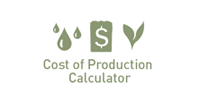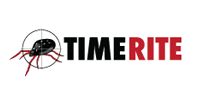Week 14 - October 2017
Eastern Market Indicator (EMI)
Eastern Market Indicator (EMI)
Microns
AWEX Auction Micron Price Guides
Sales held Wed 4th Oct & Thu 5th Oct 2017
Offering (Aust. Only)
Offering (Aust. Only)
Sales Week 14: 6th October 2017
Currency Movements
Currency Movements
Sales Week 14: 6th October 2017
Forecast
Forecast
Scheduled Australian Wool Auction Sales
AWI Commentary
A tale of two markets this week at Australian wool auctions. Meri-no types of all descriptions were in strong demand and witnessed healthy gains of up to 60ac/clean kg in some instances, whilst crossbred wools continued to falter for price by around 15ac under weak interest. The AWEX EMI (eastern market indicator) advanced by almost 2% or 28ac/clean kg purely on the back of the apprecia-tion of the prices within the Merino sector which saw the EMI close the week at 1550ac.
The currency advantage gained by those buying in USD (US Dollars) last week was short lived as the 2% gain was counterbalanced this week with the USD EMI lifting by the exact amount and closed at 1214usc/clean kg. The USD v AUD forex (foreign exchange) rates barely moved (just 0.24% higher) on a week to week basis so stronger interest was the key factor in the market and it was main-ly Chinese (USD user) orders that drove the market along.
The results of the Merino sector surprised many as Chinese wool interests were officially on their National Holiday week from Octo-ber 1 and were not expected to return until Monday the 9th. Buy-ers were initially looking to this selling week to tidy up a few out-standing orders, but as the sales progressed, fresh enquiry from the Chinese who were perhaps not entirely committed to a holiday enabled some advantageous new business to be written. The vol-umes required for relatively prompt shipment outstripped the willingness of forward selling exporters to take on further risk and so the indent operators stepped into the market operating on buy orders from the Chinese users unable to get price set from their suppliers.
The week's results showed how reactive today's wool markets are to any change in sentiment, however small. The introduction of just a few new containers (108 bales each) of orders of the same or similar type into the market can change things up, and the usual consequence is a 20 or 30ac rise almost immediately transferred into the sale rooms. The same can be said when individual types enquiry and orders dry up momentarily and falls of similar magnitude will result. For woolgrowers selling on a fortnightly to monthly comparative basis, the market now appears to be in a general 60ac swing from high to low. Whether this is a reliable trend or pattern is too early to tell.
An interesting occurrence happened this week whereby the most neglected of Merino wools became the most sought after. The sale lots exhibiting high PobM (position of break middle) tender (less than 23nkt) and high CVH (55% +)super fine wools had the strong-est of gains. For those lots finer than 17.5 micron many verged on being 80ac dearer for the week. In general terms, the market on all Merino wools, both fleece and skirtings, gained between 40 and 60ac. Cardings continued their month-long strengthening and add-ed a further 20ac, whilst crossbreds languished and fell away a further 10 to 15ac.
Most of Australia is still suffering from extremely dry conditions with virtually no rain falling across the wool growing districts the past week. As of this week we have sold 36,000 bales (75 million AUD) more than this time last year. With production forecast to remain same as last year, it is inevitable that at some stage volumes hitting the market will dwindle and that is likely to occur sooner rather than later.
Next week in Australia we again have around 40,000 bales to be offered to the trade. Strong market signals are in play, so we should look forward to highly competitive auction sales.
AUD Commentary - SA Markets
The Australian Dollar is trading lower on Friday at .7792, after taking a tumble Thursday following the release of surprisingly weak domestic Retail trade data. The market had expected a 0.3% rise in August sales, and instead sales fell 0.6% to A$25.883 billion, the largest decline in four years, adding to the pressure the ABS also revised lower the previous months retail data. On the flip side the ABS showed Australia posted a merchandise trade surplus of A$989 million in August, up 22 percent on month. That beat forecasts for a surplus of A$870 million. The Aussie was also pressured lower as Coal and Iron Ore fell, with Iron Ore slipping to a three month low of $61.48 a tonne overnight.
Meanwhile the USD is going from strength to strength on solid US economic data, and positive views from the Fed. Data overnight from the Institute for Supply Management showed that its index had jumped to 59.8 in September, its highest since Au-gust 2005 .The US Dollar Index also rose overnight to the highest level in seven weeks, while on Wall Street, a booming Dow Jones this week hit four consecutive record closing highs. The Dow was helped also by the passing of a budget resolution on Thursday that served as the first step towards the biggest tax reform plan in 40 years. The US Dollar was also lifted by comments from Philadelphia Fed President Harker who said that a December rate hike is pencilled in.
In Australia on Tuesday, the RBA at it's monthly meeting elected to leave official cash rates unchanged at the historic low of 1.5 per cent. It is the 13th consecutive hold since August 2016. Following the release of the weak retail sales data several leading economists again said the market was wrong in thinking that the RBA would lift rates soon.
Technical View:
The Aussie Dollar remains trapped within a large sideways trading pattern, looking to make a break. Presently support is seen at .7740 and resistance 8060. In the event of a strong USD rally, then the AUD could face heavy downside and fall to key support of 0.7650, A break of that could trigger a larger correction to .7350.
Southern Aurora Wool Forwards report
A strong week on the price front for both the auction and forward markets. Fine wools prices at auction remain below their May highs but record forwards levels were set in 18.5 and 19.0 microns. 18.5 microns traded at 1950 for November and 1940 in February. 19.0 traded at February at 1800 and April 1790. Strong forward levels were achieved also in 21.0 microns trading at 1560 in November through to 1520 in February and May/June at 1500. Volumes were only light with growers taking the few opportunities on offer. Forward prices into the autumn next year represent a hedging return per bale of $2200 for 19.0 microns and $1900 for 21.0 micron.












